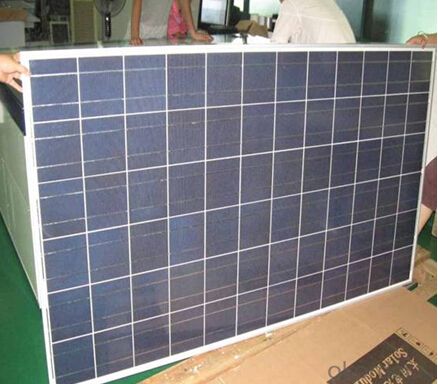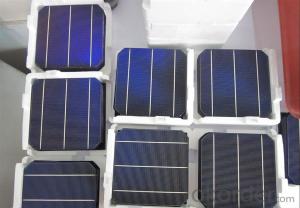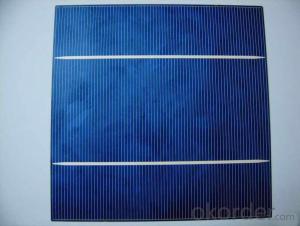185W Solar Energy System Solar Panel with Monocrystalline Silicon Wafer Solar Cells
- Loading Port:
- China main port
- Payment Terms:
- TT OR LC
- Min Order Qty:
- 100 watt
- Supply Capability:
- 10000 watt/month
OKorder Service Pledge
OKorder Financial Service
You Might Also Like
185W Solar Energy System Solar Panel Monocrystalline Silicon Solar Cells
Main Characteristic
17.6%-18% High Efficiency A Grade 125mm Monocrystalline Solar Cells
1.First-class production technology and packaging technology.
2.Adopting the world's leading technology of silicon and polycrystalline silicon cells, power density, peak hours more battery power, higher conversion efficiency.
3.Beautiful, stable, easy to take down the anodic aluminum frame electric degrees and has a wind-resistant, anti-snow function.
Eff(%) | 18.00- 18.10 | 18.10- 18.20 | 18.20- 18.30 | 18.30- 18.40 | 18.40- 18.50 | 18.50- 18.60 | 18.60- 18.70 | 18.70- 18.80 | 18.80- 18.90 | 18.9- 19.0 | 19.1- 19.1 | 19.1- 19.2 |
Pm(W) | 4.30 | 4.33 | 4.35 | 4.37 | 4.40 | 4.42 | 4.44 | 4.47 | 4.49 | 4.52 | 4.54 | 4.56 |
Isc(A) | 8.71 | 8.73 | 8.76 | 8.77 | 8.78 | 8.82 | 8.83 | 8.85 | 8.86 | 8.88 | 8.9 | 8.93 |
Im(A) | 8.19 | 8.21 | 8.24 | 8.26 | 8.30 | 8.33 | 8.35 | 8.39 | 8.42 | 8.45 | 8.47 | 8.51 |
Voc(V) | 0.630 | 0.631 | 0.632 | 0.633 | 0.634 | 0.634 | 0.635 | 0.636 | 0.637 | 0.637 | 0.638 | 0.64 |
Vm(V) | 0.527 | 0.528 | 0.529 | 0.531 | 0.531 | 0.532 | 0.534 | 0.534 | 0.535 | 0.536 | 0.537 | 0.538 |
FF(%) | 78.6 | 78.7 | 78.8 | 79.0 | 79.2 | 79.3 | 79.5 | 79.6 | 79.8 | 80 | 80 | 80 |
Product Show
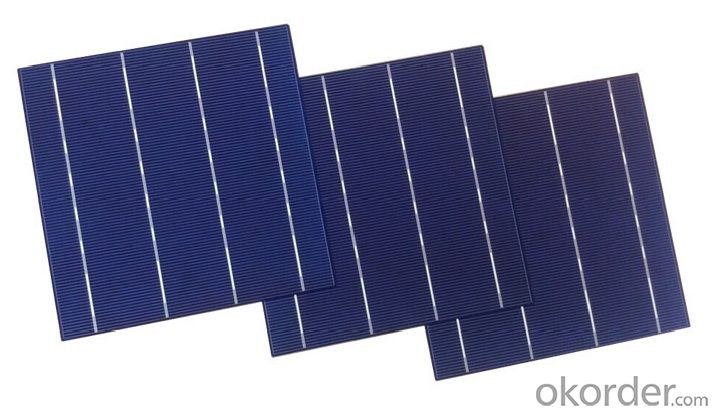

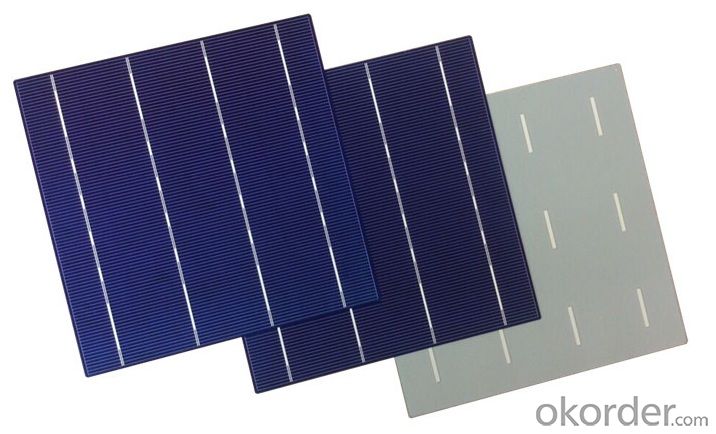
Shipping
1. Shipment shall be made only after PAYMENT is received.
2. Please do inform us your DETAILED ADDRESS AND CONTACT INFOMATION before shipment.
3. Shipment shall be made in THREE WORKING DAYS.
- Q: What is the purpose of a grounding wire in a solar silicon wafer?
- The purpose of a grounding wire in a solar silicon wafer is to provide a path for excess electrical charge to safely dissipate into the ground. This helps to protect the wafer and other components of the solar system from damage caused by electrical surges or lightning strikes.
- Q: Can solar silicon wafers be used in solar-powered electric vehicle charging stations?
- Yes, solar silicon wafers can be used in solar-powered electric vehicle charging stations. These wafers are commonly used in solar panels to convert sunlight into electricity, which can then be used to power various applications, including charging electric vehicles. By installing solar panels with silicon wafers at charging stations, it is possible to generate clean and renewable energy to charge electric vehicles, reducing reliance on fossil fuels and promoting sustainability.
- Q: What is the typical weight of a solar silicon wafer?
- The typical weight of a solar silicon wafer is around 2 to 4 grams.
- Q: What are the disadvantages of using solar silicon wafers?
- One of the main disadvantages of using solar silicon wafers is their high production cost. The process of manufacturing these wafers involves intricate steps and requires advanced technology, making it expensive. Additionally, the materials used in silicon wafer production are not abundant and often require mining, which can have negative environmental impacts. Another disadvantage is their relatively low energy conversion efficiency. While silicon wafers are widely used in solar panels, their efficiency in converting sunlight into electricity is not the highest compared to some newer photovoltaic technologies. This can limit the overall energy output and effectiveness of solar systems using silicon wafers. Furthermore, silicon wafers are rigid and inflexible, making them less suitable for certain applications. They cannot be easily integrated into flexible or curved surfaces, limiting their use in areas where design flexibility is crucial, such as building-integrated photovoltaics. Finally, the manufacturing process of silicon wafers generates a significant amount of waste, including hazardous byproducts. Proper disposal and treatment of this waste can be challenging and costly, posing potential environmental risks if not managed properly. Overall, while silicon wafers have been a dominant technology in the solar industry, their disadvantages include high production costs, lower energy conversion efficiency, inflexibility, and waste management challenges.
- Q: Can solar silicon wafers be used in harsh environments?
- Yes, solar silicon wafers can be used in harsh environments. They are designed to withstand various environmental conditions such as extreme temperatures, high humidity, and exposure to UV radiation. The wafers are typically coated with protective materials to enhance their durability and resistance to corrosion, making them suitable for harsh outdoor environments.
- Q: For solar wafer cutting diamond wire, what are the characteristics?
- There are several kinds of electroplated diamond wire, resin bonded diamond wire and mechanical pressing diamond wire. The general application of electroplating diamond wire is mainly due to its good wear resistance and heat resistance, diamond particles are not easy to fall off.Advantages: 1. Compared with the free abrasive cutting, the diamond wire cutting has a higher grinding speed, that is, higher production efficiency.2, silicon wafer yield is higher.3, cutting fluid consumption less, can reduce environmental pollution problems.Disadvantages: 1, the silicon wafer surface has obvious line, to see whether the customer can accept.
- Q: What is the effect of surface texturing on solar silicon wafers?
- Surface texturing on solar silicon wafers enhances light trapping and increases the absorption of sunlight, thereby improving the overall efficiency of the solar cell.
- Q: How do we use the scanning electron microscope
- Most of the samples prepared by silicon wafer were dispersed on the surface of silicon wafer after the dispersion of nano particles. The test results and this kind of sample is silicon pretreatment, the main drying and sample dispersion and sample, the majority of small particle size, easy to agglomerate, take the solution can take the middle or upper clear liquid
- Q: What is the average reflectivity of a solar silicon wafer?
- The average reflectivity of a solar silicon wafer is typically around 30%.
- Q: How do solar silicon wafers perform in desert environments?
- Solar silicon wafers perform well in desert environments due to the high levels of sunlight and low humidity. The dry and hot conditions in deserts allow for efficient solar energy generation, as there are fewer obstructions such as clouds or pollution. However, it is important to ensure proper maintenance and cleaning of the wafers to prevent the accumulation of dust or sand particles, which can hinder their performance.
Send your message to us
185W Solar Energy System Solar Panel with Monocrystalline Silicon Wafer Solar Cells
- Loading Port:
- China main port
- Payment Terms:
- TT OR LC
- Min Order Qty:
- 100 watt
- Supply Capability:
- 10000 watt/month
OKorder Service Pledge
OKorder Financial Service
Similar products
Hot products
Hot Searches
Related keywords



